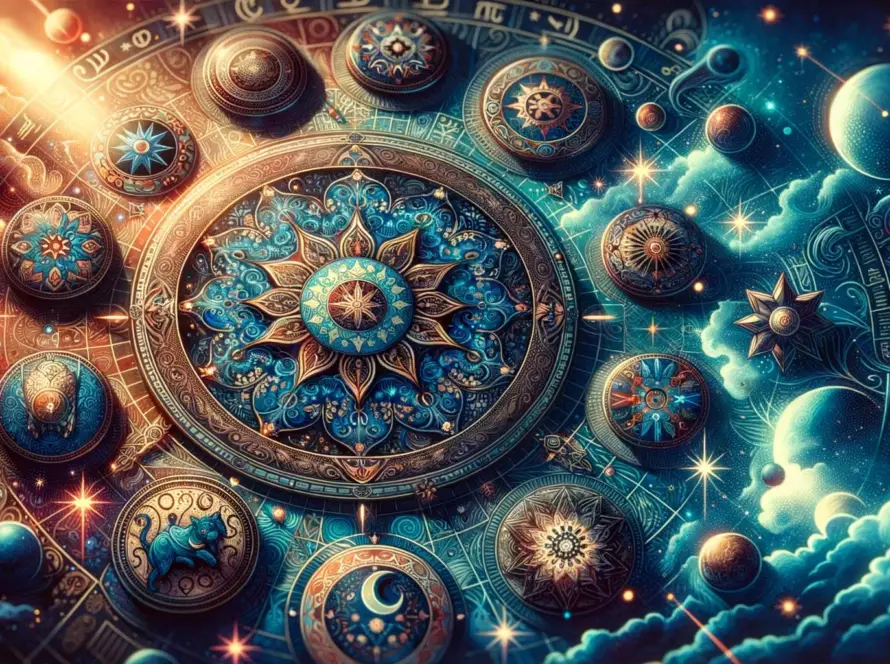Generated by Contentify AI
- Introduction
- Understanding the Roots of Indian Cinema
- The Golden Age of Indian Cinema: The Works of Satyajit Ray
- Exploring Modern Indian Cinema
- The Influence of Indian Cinema on Global Film Industry
- Challenges and Innovations in Contemporary Indian Cinema
- The Role of Technology in Shaping Indian Cinema
- Indian Cinema in the Digital Age
- Conclusion

Key Takeaways
- The impact of Satyajit Ray on Indian cinema cannot be overstated, as he is considered one of the greatest filmmakers in the history of Indian cinema.
- Indian cinema has evolved over the years, moving from its roots in traditional storytelling to more modern and experimental forms of filmmaking.
- The present-day Indian cinema landscape is diverse, with filmmakers exploring a wide range of genres and themes, pushing boundaries and challenging societal norms.
Introduction
Indian cinema has undergone a remarkable transformation over the years, marked by significant shifts in storytelling, technology, and global influence. From its humble beginnings to the groundbreaking works of filmmakers like Satyajit Ray, Indian cinema has evolved into a dynamic and thriving industry. As we delve into the past to understand the roots of Indian cinema and explore its journey through the Golden Age and into the modern era, we witness a rich tapestry of creativity, innovation, and cultural impact that continues to shape the industry today. The evolution of Indian cinema reflects not just a change in medium, but a reflection of the society, values, and aspirations of a nation that has captivated audiences worldwide.
Understanding the Roots of Indian Cinema
Indian cinema has deep-rooted origins that trace back to the early 20th century when silent films made their way to India. The advent of sound in the late 1920s revolutionized the industry, leading to the production of India’s first sound film, “Alam Ara,” in 1931. This marked the beginning of a new era in Indian cinema, with filmmakers experimenting with themes and storytelling techniques that resonated with the country’s diverse cultural landscape.
The 1950s and 1960s are often referred to as the Golden Age of Indian Cinema, a period marked by the emergence of visionaries like Satyajit Ray. Ray’s films, such as the acclaimed “Pather Panchali” trilogy, showcased a new wave of storytelling that delved into the depths of human emotions and societal issues. His works not only garnered international acclaim but also influenced a generation of filmmakers both in India and abroad.
As Indian cinema progressed into the modern era, the industry witnessed a shift towards more diverse and experimental narratives. Filmmakers like Mani Ratnam, Anurag Kashyap, and Zoya Akhtar have redefined storytelling, blending traditional themes with contemporary styles to create a unique cinematic experience. The global success of films like “Slumdog Millionaire” and “Lagaan” further solidified India’s presence on the international film stage, showcasing the industry’s ability to captivate audiences worldwide.
With the advent of digital technology and streaming platforms, Indian cinema has entered a new phase of innovation and creativity. Filmmakers are now exploring new genres, formats, and distribution channels, pushing the boundaries of traditional storytelling. The influence of Indian cinema on the global film industry continues to grow, with collaborations between Indian and international filmmakers becoming more common.
Despite facing challenges such as censorship issues, funding constraints, and market competition, Indian cinema remains a powerhouse of creativity and diversity. The industry’s ability to adapt to changing technologies and audience preferences has ensured its relevance in the digital age. As we look to the future, the evolution of Indian cinema from Satyajit Ray’s masterpieces to the present day serves as a testament to the industry’s resilience, ingenuity, and lasting impact on the world stage.
E-Commerce Website Development and Design
Shakti Web Solutions brings maximum results to startups with our development and design services. We provide website SEO for marketing and driving traffic. Explore more about our creative agency and team.
The Golden Age of Indian Cinema: The Works of Satyajit Ray
The Golden Age of Indian Cinema saw a transformative shift in storytelling and filmmaking techniques, with iconic filmmakers like Satyajit Ray leading the way. Ray’s works, such as the groundbreaking “Pather Panchali” trilogy, showcased a deep exploration of human emotions and societal issues, earning him international acclaim and influencing a generation of filmmakers. His unique cinematic vision and narrative style set a high standard for storytelling in Indian cinema.
As Indian cinema progressed into the modern era, filmmakers continued to build upon Ray’s legacy, blending traditional themes with contemporary storytelling techniques. Visionaries like Mani Ratnam, Anurag Kashyap, and Zoya Akhtar have pushed boundaries and redefined cinematic norms, captivating audiences with their diverse narratives and innovative approaches. The global success of Indian films like “Slumdog Millionaire” and “Lagaan” further solidified the industry’s presence on the world stage, showcasing its ability to resonate with audiences across cultures and borders.
Today, Indian cinema stands at the forefront of innovation and creativity, embracing digital technology and exploring new genres and formats. The industry’s influence on the global film stage continues to grow, with collaborations and crossovers between Indian and international filmmakers becoming more prevalent. Despite facing challenges and competition, Indian cinema remains a vibrant and dynamic force in the world of filmmaking, embodying a rich tapestry of storytelling, cultural diversity, and artistic expression that continues to captivate audiences worldwide.
Related articles
Exploring Modern Indian Cinema
The evolution of Indian cinema from its early roots to the present day has been a remarkable journey marked by creativity, innovation, and cultural significance. The Golden Age of Indian Cinema, epitomized by the works of visionaries like Satyajit Ray, laid the foundation for a new wave of storytelling that delved deep into human emotions and societal issues. Ray’s films, such as the iconic “Pather Panchali” trilogy, not only garnered international acclaim but also influenced generations of filmmakers both in India and abroad.
As Indian cinema transitioned into the modern era, filmmakers continued to build upon Ray’s legacy, blending traditional themes with contemporary styles to create a diverse and dynamic cinematic landscape. The global success of films like “Slumdog Millionaire” and “Lagaan” showcased India’s ability to captivate audiences worldwide, further solidifying its presence on the international film stage.
With the advent of digital technology and streaming platforms, Indian cinema has embraced new opportunities for innovation and creativity. Filmmakers are exploring new genres, formats, and distribution channels, pushing the boundaries of traditional storytelling and captivating audiences with their diverse narratives and unique cinematic visions.
Despite facing challenges and competition, Indian cinema remains a powerhouse of creativity, diversity, and cultural richness. The industry’s ability to adapt to changing technologies and audience preferences has ensured its continued relevance and impact on the global film industry. As we look to the future, the evolution of Indian cinema, from Satyajit Ray’s timeless masterpieces to the dynamic present-day landscape, reflects a journey of resilience, ingenuity, and enduring cultural influence.
The Influence of Indian Cinema on Global Film Industry
The influence of Indian cinema on the global film industry is undeniable, with a rich history that has evolved over the years. Filmmakers like Satyajit Ray have played a pivotal role in shaping the narrative and cinematic techniques that have transcended borders and captivated audiences worldwide. Ray’s iconic works, such as the “Pather Panchali” trilogy, not only garnered international acclaim but also set a high standard for storytelling in Indian cinema. His deep exploration of human emotions and societal issues resonated with audiences on a global scale, influencing a generation of filmmakers both in India and abroad. As Indian cinema progressed into the modern era, filmmakers continued to build upon Ray’s legacy, blending traditional themes with contemporary storytelling techniques to create a diverse and vibrant cinematic landscape. The global success of Indian films like “Slumdog Millionaire” and “Lagaan” further solidified the industry’s presence on the world stage, showcasing its ability to resonate with audiences across cultures and borders. Today, Indian cinema stands at the forefront of innovation and creativity, embracing digital technology and exploring new genres and formats. The industry’s influence on the global film stage continues to grow, with collaborations and crossovers between Indian and international filmmakers becoming more prevalent. Despite facing challenges and competition, Indian cinema remains a dynamic force in the world of filmmaking, embodying a rich tapestry of storytelling, cultural diversity, and artistic expression that continues to captivate audiences worldwide.
Challenges and Innovations in Contemporary Indian Cinema
Challenges and Innovations in Contemporary Indian Cinema
The landscape of Indian cinema today is a blend of tradition and modernity, reflecting the country’s rich cultural tapestry and technological advancements. Filmmakers have been faced with a myriad of challenges, from censorship issues and funding constraints to the changing preferences of a diverse audience. However, these challenges have spurred innovation and creativity within the industry, leading to a wave of groundbreaking films that push boundaries and redefine storytelling.
One of the key innovations in contemporary Indian cinema is the exploration of diverse narratives and genres that cater to a global audience. Filmmakers are not only focusing on traditional themes but also delving into social issues, LGBTQ representation, and unconventional storytelling techniques. The industry has seen a rise in independent filmmakers and production houses that are willing to take risks and experiment with new ideas, challenging the norms and stereotypes that have long dominated Indian cinema.
Technology has played a significant role in shaping the evolution of Indian cinema, with filmmakers embracing digital tools and platforms to reach a wider audience. The rise of streaming services has provided a new avenue for filmmakers to showcase their work and connect with viewers on a global scale. Virtual reality, CGI, and advanced special effects have also revolutionized the way stories are told on screen, enhancing the visual experience and pushing the boundaries of creativity.
Despite these innovations, contemporary Indian cinema continues to grapple with issues of representation, diversity, and inclusivity. The industry is witnessing a gradual shift towards more inclusive storytelling, with a growing emphasis on female-centric narratives, regional cinema, and stories that reflect the country’s cultural diversity. Filmmakers are also exploring themes of identity, migration, and globalization, reflecting the changing social fabric of modern India.
As Indian cinema navigates the challenges of the digital age, filmmakers are redefining the boundaries of storytelling and pushing the industry towards new horizons. The evolution of Indian cinema, from the masterpieces of visionaries like Satyajit Ray to the dynamic and diverse landscape of contemporary filmmaking, is a testament to the industry’s resilience, creativity, and enduring legacy in the global film arena.
The Role of Technology in Shaping Indian Cinema
The incorporation of technology in Indian cinema has played a pivotal role in shaping the industry’s trajectory over the years. From the early days of silent films to the digital age, technology has revolutionized the way stories are told on screen, enhancing visual effects, sound quality, and overall cinematic experience. Filmmakers have embraced advancements in digital tools, special effects, and editing software to bring their creative visions to life with greater precision and impact. The evolution of Indian cinema from the pioneering works of visionaries like Satyajit Ray to the present-day landscape has been marked by a continuous adaptation to technological innovations, resulting in a more immersive and engaging cinematic journey for audiences. As the industry continues to push boundaries and explore new frontiers in storytelling, technology remains a driving force in shaping the future of Indian cinema, bridging the gap between the rich heritage of the past and the dynamic possibilities of the present.
Indian Cinema in the Digital Age
In the realm of Indian cinema, the influence of visionary filmmakers like Satyajit Ray is undeniable. Ray’s masterpieces, such as the “Pather Panchali” trilogy, set a high standard for storytelling and cinematic artistry, shaping the course of Indian cinema. As the industry transitioned into the modern era, filmmakers built upon Ray’s legacy, exploring diverse themes and pushing the boundaries of traditional storytelling. The global success of films like “Slumdog Millionaire” and “Lagaan” further solidified India’s presence on the international film stage, showcasing its ability to captivate audiences worldwide. Today, Indian cinema stands at the forefront of innovation and creativity, embracing digital technology and exploring new genres and formats. The industry’s resilience, ingenuity, and enduring cultural impact continue to shape the evolving landscape of Indian cinema, bridging the rich heritage of the past with the dynamic possibilities of the present.
Conclusion
As Indian cinema has progressed from its early roots to the dynamic present-day landscape, it has undergone a remarkable evolution marked by creativity, innovation, and cultural significance. The Golden Age of Indian Cinema, exemplified by the works of iconic filmmakers like Satyajit Ray, laid the foundation for a new wave of storytelling that delved deep into human emotions and societal issues. Ray’s timeless masterpieces set a high standard for cinematic artistry and narrative depth, influencing generations of filmmakers and captivating audiences worldwide.
As Indian cinema transitioned into the modern era, filmmakers continued to build upon Ray’s legacy, blending traditional themes with contemporary styles to create a vibrant and diverse cinematic landscape. The global success of Indian films like “Slumdog Millionaire” and “Lagaan” further solidified the industry’s presence on the international stage, showcasing its ability to resonate with audiences across cultures and borders.
Today, Indian cinema stands as a powerhouse of creativity and innovation, embracing digital technology and exploring new genres and formats. Filmmakers are pushing the boundaries of traditional storytelling, captivating audiences with their diverse narratives and unique cinematic visions. The industry’s resilience, ingenuity, and enduring cultural impact reflect a journey of artistic growth, adaptability, and lasting influence from the pioneering works of Satyajit Ray to the vibrant tapestry of contemporary Indian cinema.






